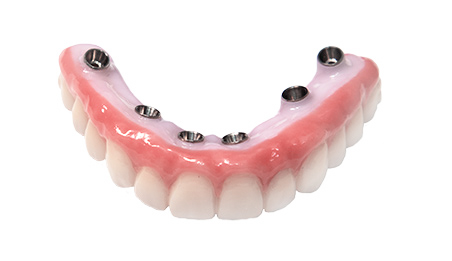Getting My Dental Sense To Work
Getting My Dental Sense To Work
Blog Article
Excitement About Dental Sense
Table of ContentsThe 2-Minute Rule for Dental SenseDental Sense Can Be Fun For AnyoneThe Facts About Dental Sense RevealedSome Known Factual Statements About Dental Sense
are medical devices surgically implanted into the jaw to recover a person's capability to eat or their appearance. They offer support for synthetic (phony) teeth, such as crowns, bridges, or dentures. When a tooth is shed due to injury or condition, a person can experience issues such as quick bone loss, faulty speech, or adjustments to chewing patterns that lead to discomfort.Oral implant systems contain a dental implant body and oral implant joint and might likewise consist of a joint fixation screw. Dental veneers cost. The oral implant body is operatively put in the jawbone instead of the tooth's origin. The dental implant joint is typically affixed to the implant body by the abutment addiction screw and extends through periodontals right into the mouth to support the attached synthetic teeth
(https://www.awwwards.com/dentalsense1/)Framework of The Dental Implant System choosing oral implants, speak to your oral supplier regarding the potential advantages and dangers, and whether you are a prospect for the procedure. Points to consider: Your overall health is a vital consider figuring out whether you are a good candidate for dental implants, how much time it will certainly require to recover, and for how long the implant may remain in location.
Smoking cigarettes might impact the recovery process and reduce the long-term success of the implant. The recovery procedure for the implant body might take a number of months or longer, during which time you commonly have a short-term abutment instead of the tooth. the oral implant procedure: Very carefully adhere to the dental hygiene directions offered to you by your dental supplier.
Indicators on Dental Sense You Should Know
Implant failing can lead to the requirement for one more procedure to fix or change the dental implant system. Restores the ability to eat Recovers aesthetic look Assists maintain the jawbone from diminishing due to bone loss Protects the health of the surrounding bone and periodontals Aids maintain surrounding (nearby) teeth steady Enhances lifestyle Damages to surrounding natural teeth during implant positioning Injury to the surrounding cells throughout surgery, such as sinus perforation Injury throughout surgery (for instance, crack of bordering jawbone) Poor feature, such as really feeling like the teeth do not bite with each other normally A sensation that the tooth is loosened or turning in position resulting from a joint screw loosening up Implant body failure (looseness of the implant body) due to systemic infection, which may be more probable in individuals with unchecked diabetes mellitus due to local infection in bone and periodontals supporting the implant body because of postponed healing, which may be more probable in individuals that smoke Problem cleaning up the periodontals around the dental implant, leading to inadequate oral hygiene Neglected periodontal illness Post-surgical feeling numb as a result of nerve impingement or damages Constantly inform wellness treatment carriers and imaging specialists that you have dental implants prior to any type of magnetic resonance imaging (MRI) or x-ray treatments.
FDA is not familiar with any kind of negative occasions reported for MRI or x-ray procedures with oral implants. Oral implants systems are generally made from materials that adhere to global agreement requirements of the International Organization for Standardization (ISO) or ASTM International. These criteria have details of what makes a risk-free product.

A dental implant is a framework that replaces a missing tooth. With screw-like tools, the doctor inserts an implant right into the jawbone, and it works as a support for a fabricated tooth, called a crown. A device called a joint connects the synthetic tooth to the oral implant. The crown is tailor-made to fit the individual's mouth and match the color of their teeth.
The Main Principles Of Dental Sense
Some individuals are not eligible for oral implant surgical treatment. It is for oral specialists to run on people with: intense illnessuncontrollable metabolic diseasebone or soft cells illness or infectionIf these problems are resolved, a person can have the surgery. In, dental cosmetic surgeons avoid running on people with: If individuals with any of the above go through dental implant surgery, there is a higher risk of the dental implant stopping working.

Oral implant surgical procedure is a customized process. It's not the exact same for everybody. The complying with gives a general summary of what you can anticipate your dental practitioner, dental surgeon, periodontist or prosthodontist to do: Place the dental implant surgically. Provide you time to recover. Connect the post and final crown, bridge or denture.
Next off, your specialist will meticulously put the dental implant into your jaw. If your dental implant is near the front of your mouth, your dentist will make a short-lived tooth for you to wear until you recover.
The smart Trick of Dental Sense That Nobody is Talking About
Your copyright can tell you what to anticipate in your circumstance. Throughout the healing phase, your jawbone must fuse to the dental implant. This process, called osseointegration, is important for security and long-term success. This procedure can take anywhere from three to 9 months. In many cases, it may take much longer.
Once your dental implant heals, your dental expert can affix the abutment (little connector blog post) and your last restoration (crown, bridge or denture). This usually takes about one hour to complete and may require a 2nd small surgical treatment. You shouldn't feel any kind of pain throughout your oral implant procedure because your provider will certainly make use of medicine to numb your gums.
Report this page